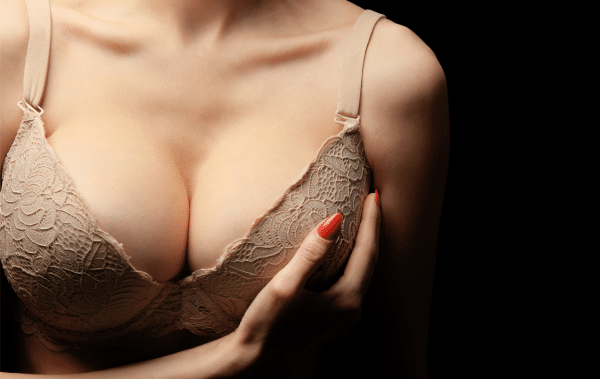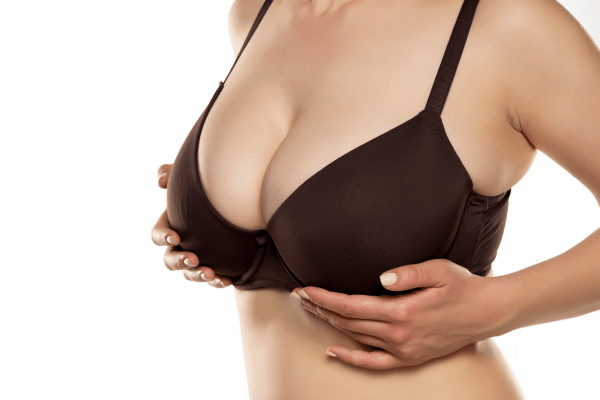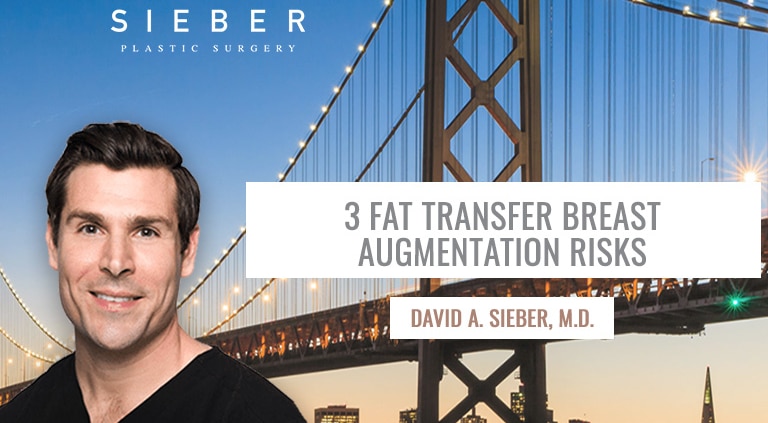3 Fat Transfer Breast Augmentation Risks
Fat transfer is an overall safe procedure that can have fantastic results for women looking to increase their breast size.
When compared with breast augmentation, the fat transfer breast augmentation procedure doesn’t require implants, which means no foreign body-related risks such as leaking or capsular contracture.
And because large incisions aren’t necessary for the fat transfer process, there’s no significant scarring as is sometimes the case with breast lift surgery.
With that said, it’s important to emphasize that all surgeries come with at least some potential risks. Breast augmentation through fat transfer risks exist, although they are not terribly common. So, what are the risks of fat transfer to breast surgery?
Let’s take a look at three to know about before moving forward with this surgical procedure.
FAT TRANSFER BREAST AUGMENTATION RISKS:
1. FAT REABSORPTION

Surgeons who are highly skilled at fat transfer breast augmentations know that a large percentage of the fat cells that are transferred are automatically going to be absorbed by the patient’s own body.
This is normal and to be expected. For this reason, surgeons generally transfer a surplus of fat cells to the breasts so that any that are absorbed won’t affect the final outcome.
If your surgeon does not take into account fat reabsorption or if too much of the relocated fat cells are absorbed into the body, your results may be diminished. When it comes to breast augmentation with transfer risks, this is one that many patients wonder about.
2. FAT NECROSIS
If you opt for breast augmentation using fat transfer, fat necrosis is another one of the risks that come with a fat transfer breast augmentation.
Fat necrosis is basically when breast tissue becomes damaged or dies. This results in hardened lumps (or sometimes, oil cysts) that may appear on the breasts after the fat transfer procedure.
While the issue here is not necessarily dangerous, it can certainly cause cosmetic problems for the patient as it will result in unevenly contoured breasts. The lumps or cysts may also end up being uncomfortable and even painful as well.
Other symptoms related to fat necrosis include calcified lumps mixed with oil cysts, bruising and redness around the lumps, pain surrounding the lumps or cysts, discoloration of the skin, and an overall change in the shape and size of the breasts.
If you notice any of these symptoms, it’s important to contact your surgeon right away.
3. INFECTION
Any surgery comes with a risk of infection. Fortunately, it is rare for a fat transfer augmentation to result in infection.
With that said, if you are a smoker, have a weakened immune system, or have other risk factors for developing infections, it’s important to speak with your surgeon about these possible complications before scheduling your surgery.
An infection after surgery can become a potentially life-threatening situation. It is important to contact your plastic surgeon right away if you have any concerns.
WHAT IF I HAVE AN UNNATURAL-LOOKING OUTCOME?

Achieving a beautiful fat transfer breast augmentation is relatively easy because you will be using your body’s own fat to adjust the size of your breasts. No foreign bodies (implants) are necessary and recovery can be quicker.
If you undergo this procedure and end up with an outcome you are unhappy with — for example, if you have lumps or cysts due to fat necrosis or the size of your breasts isn’t as large as you had wanted — you should speak with your surgeon as soon as possible.
One thing to remember, however, is that the final size and overall appearance of your breasts is not going to be completely settled until full healing has taken place.
For this reason, you will want to wait until you are completely healed from the procedure before determining whether you are truly unhappy with your outcome.
FAQS: FAT TRANSFER BREAST AUGMENTATION RISKS
Which is better, breast implants, augmentation or fat transfer?
There are pros and cons of a fat transfer breast augmentation procedure and traditional (implant) breast augmentation. The procedure that will work best for you will largely depend on how large you want your breasts.
If you’re looking for a big change in breast shape and a significant increase in the size of your breasts, you may want to opt for augmentation with implants. Fat transfer breast augmentation is often better for moderate size increases and a more natural look.
How many cup sizes can you go up with a body fat transfer?
The fat transfer breast augmentation technique cannot drastically increase the size of your breasts. Most patients are able to go up about one cup size with this procedure.
Is a fat transfer breast augmentation worth it?
For the majority of breast augmentation patients, absolutely. Most patients who opt for fat transfer breast augmentation are extremely happy with their results after 5 years.
Does fat transfer to breasts last?
Yes. fat transfer to breasts lasts for a very long time with very little need for concern once healing has finished.
What are the complications of fat grafting breast implants?
The primary issues frequently mentioned in relation to autologous fat grafting were enduring pain and hematoma, which could not be reversed.
What are the safest breast implants to get?
The US Food and Drug Administration (FDA) has deemed both saline and silicone implants to be safe and authorized. These implants have a similar lifespan of approximately 10-15 years and are capable of delivering outcomes that appear natural.
Is breast cancer a risk I should worry about?
Undergoing a fat transfer breast augmentation procedure does not elevate the risk of breast cancer. Furthermore, for the majority of individuals, mammograms remain effective even post this procedure. This is due to the presence of both fatty tissue and breast tissue within the breasts themselves.
LEARN ABOUT FAT TRANSFER BREAST AUGMENTATION RISKS: BOOK CONSULT

Dr. David Sieber is always happy to answer any questions related to breast procedures, whether it be augmentation, fat transfer, breast reduction surgery, breast reconstruction or other cosmetic procedures. Whether you have more inquiries related to breast fat transfer risks or questions about another procedure, a consultation is the best way to get your answers.
Call today to book your consultation with Dr. Sieber. We look forward to hearing from you.




